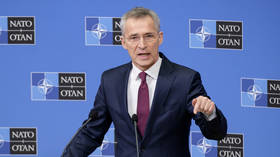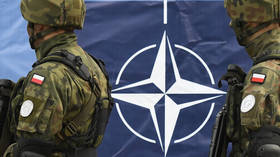NATO chief outlines Arctic expansion

NATO will increase its military presence in the Arctic on account of Russia and China posing a “strategic challenge” to the bloc there, Secretary-General Jens Stoltenberg argued, in an op-ed ahead of his visit to the Canadian north.
The Arctic is “the gateway to the North Atlantic, hosting vital trade, transport and communication links between North America and Europe. Ensuring freedom of navigation and unfettered access is essential to keep our economies strong and our people safe,” Stoltenberg wrote in the article, published on Wednesday in Canada’s Globe and Mail.
Due to the “rapidly warming climate,” much of the Arctic will be ice-free in the summer, which unlocks “opportunities for shipping routes, natural resources and economic development” that can be exploited by “authoritarian regimes” like Russia and China, Stoltenberg argued.
Russia is beefing up its Northern Fleet, while China is planning a “Polar Silk Road” to Europe via the Arctic, building the world’s biggest icebreaker and declaring itself a “near-Arctic state,” the Norwegian former politician wrote.
To counter this, Stoltenberg wrote, the “defensive alliance” will invest in “new air and maritime capabilities,” conduct more exercises like Trident Juncture and Cold Response, and bolster its presence in the High North overall. The Cold Response drills in Norway, which took place in March and April, involved troops from 27 countries and were the largest NATO Arctic exercise since the 1980s.
Stoltenberg also revealed that he would be visiting the Cold Lake airbase and the Cambridge Bay early-warning radar site in Nunavut as part of his Arctic tour with Canadian Prime Minister Justin Trudeau.
While Stoltenberg talked up the alleged Sino-Russian threat in the region, once Finland and Sweden formally join the alliance, seven out of eight Arctic Council members will belong to NATO. All of them have suspended their activities in the consulting body earlier this year, citing the conflict in Ukraine. Russia, the only non-NATO member of the council, accounts for 53% of the Arctic coastline and more than half of the region’s permanent population.
Russia has warned against the growing militarization of the Arctic, saying that Finland and Sweden joining NATO created a risk of turning the region into a “theater of military operations.”













